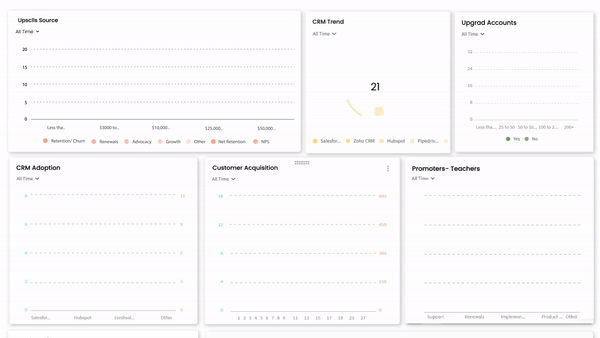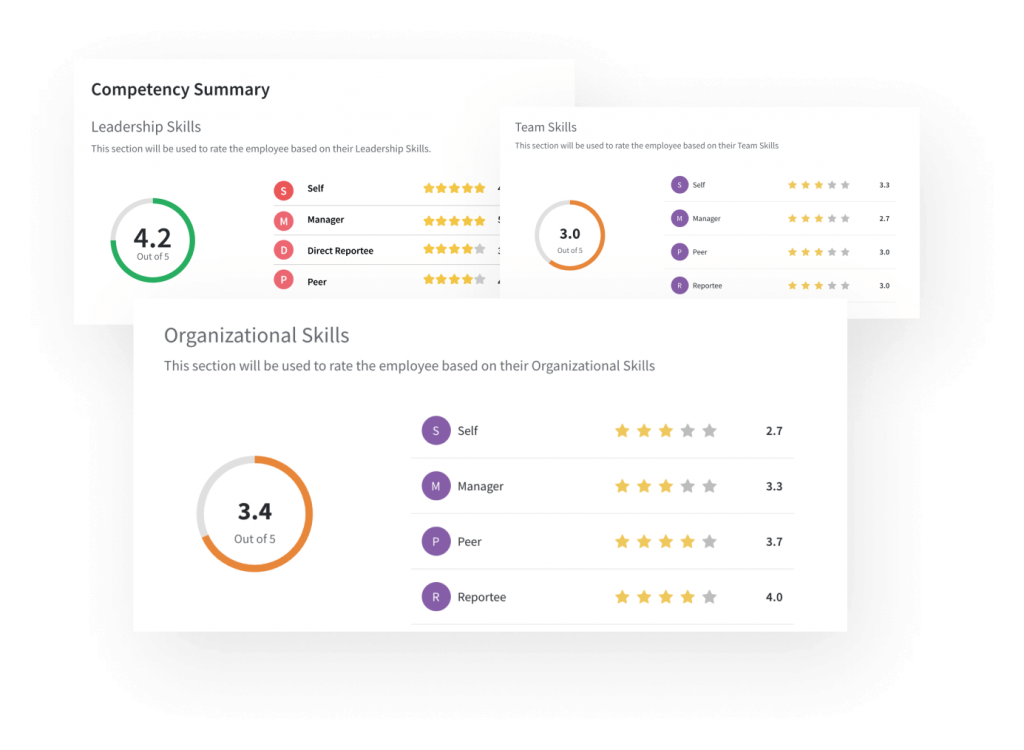Employee Experience
6 Important KPIs That Training Managers Should Track in 2025
Article written by Mathew Maniyamkott
Regular contributor to various magazines. Passionate about entrepreneurship, startups, marketing, and productivity.
15 min read
19 September 2025

60 Seconds Summary
This blog talks about the key performance indicators (KPIs) every training manager should track to evaluate and improve training effectiveness. Learn how the right KPIs like engagement, productivity, and feedback, can help you measure the success of your training programs, enhance employee development, and align training efforts with business goals. Let's get practical tips for choosing, monitoring, and acting on these essential metrics.
Have you ever experienced the frustration of watching your new employee training sessions fill up, only to discover months later that performance reviews tell a completely different story? High attendance rates, engaged participants, positive feedback scores, yet minimal improvement in actual job performance and turnover rates that refuse to budge. Enter important KPIs for training managers, with tools that help track impact and engagement in real time.
What are training manager KPIs? Let’s break it down.
- First, Key Performance Indicators or KPIs are tools that are used to measure the performance of skilled personnel based on their results, innovation, quick thinking, quality, etc.
- Training helps employees to enhance their skills so that they can meet the expectations that are set by the trainers.
- When the employees are trained to be managers, it is expected that they will be able to validate the effectiveness of the training by producing better results.
The training should delve into increasing the competency and technical output of the employees. This is where training manager KPIs come in.
6 important KPIs that training managers should track
Here are six KPIs for training managers that you need to be aware of:
#1. Engagement Score
The link between the organization and the employee are managers. If the manager is doing his or her job well, it will reflect in the morale of the employees too. They will be happy dropping into the office every day, it will reflect in the way they participate in work-related assignments.
There might be a lot of factors that are responsible for employee engagement, but the manager is a pivotal part of the ecosystem. Managers support employee engagement at every level. Employee engagement survey processes have a series of questions that are asked to the employees about how they view the manager. Using information from this survey, you will be able to gauge how effective the managers are.
Great managers constantly engage with their employees because they want everyone on the team to do well. They create an environment where employees take responsibility on their own because they are committed to the cause. Unfortunately, not every team is led by a great manager, which is exactly why you will see the variance in the scores across different teams.

The better the manager, the more involved and engaged would be the employees. Remember, people are different everywhere. If they are not treated well, it will reflect in their work. There is no magic pill to take care of your employees. Managers need to be empathetic and the employees should feel as if they will stand up for them. It will result in absenteeism, high turnover and the output they generate will go down.
Since Employee Engagement score is calculated at regular intervals, we can extrapolate the results to understand how our managers are faring. The factors that are usually included in an Employee Engagement calculation are the following:
1. Exit interviews
2. Retention rate
3. Track productivity metrics
4. Use feedback
5. Anonymous surveys, and so on.
You will get all this with SurveySparrow. You can create a free account to get a trial of all these features and more.
14-day free trial • Cancel Anytime • No Credit Card Required • No Strings Attached
If a manager doesn’t allow for the right conditions to foster for everyone in the team, it will reflect in the employee engagement score. To get even better results, you can add specific questions about the manager, the methods they use, how they affect the employee’s performance, etc.
#2. Productivity Over Time
The productivity of the team wrests on the shoulders of the manager. No matter how many resources are there, it is the duty of the manager to ensure that the employees who report to them are always productive. As an effective manager, you need to chart the metrics that will be used to measure how the employees perform.
One metric could be time spent on tasks, which can be tracked with employee time tracking software. These scores are then used to assess the manager and compare it against other managers in the same department.
There are a lot of parameters using which productivity can be measured. It could be based on the time spent on each task, participation in work-related programs, employee sentiment, and so on. Each of these factors is important for a wholesome and productive workforce.

Did the manager get enough skills and technical know-how after the training program? How has that affected the results for the business? Have there been any improvements in any of the metrics that are used for the employees? Do the employees under the manager’s team feel as if they are under a better manager? All of these factors are important when assessing productivity metrics.
The productivity of the team is also based on how fast they are able to get things done. Has that factor improved after the training for the manager? Did the manager find news ways to organize the work for everyone? Is everyone falling into a new process? All of these questions need to be a part of your training manager KPIs.
#3. Customer Service Quality
Using sales numbers and the amount of profit they generated is not necessarily how you measure the quality of customer service. There is no fool-proof method to quantify service quality. The only way you can do that is by asking for feedback at each touchpoint. CSAT, NPS, and other customer satisfaction metrics can be employed.
The type of service that customers receive is not totally dependent on the managers, but more so on the employees. But the type of support and resources that the employees get for providing proper services is totally dependent on the manager.

Here’s what you can do to measure the service quality offered to the customers. Before the training, ensure that you have all the data available so that you can use it to measure the improvement.
Some of the employees might have been in different teams after which they might be grouped for a particular manager. So if you are trying to find the success metrics of the manager with regards to this, then you need to collate the numbers of the employees individually.
Using SurveySparrow’s tool, you can embed the surveys into the emails that you send to your customers so you can measure how happy they are. Measure customer satisfaction after each interaction so you can see if the service is consistent if there is any upward spike or a dip.
#4. 360-Degree Feedback
It is one of the most commonly used feedback mechanisms. In this scenario, the inputs on the manager’s performance is given by a number of people who have direct working relationships with the person. This feedback can be used as a metric so that the improvement in this feedback’s performance can be taken into account.
The inputs from 360-degree feedback can be either qualitative or quantitative. The quantitative data can be based on their attitudes, behavior, and their work-related competency. Qualitative feedback in this scenario can be based on the views of various people who are associated with the manager.

Here are the stakeholders who are a part of the review:
- The manager
- Subordinates who report to the manager
- Higher-ups in the management
- Direct reports
360-degree essentially means from all sides. In this type of feedback, the manager in question will get feedback from people who are below, above, and even on the same level as the person.
In a 360 degree feedback, the person is reviewed in a number of criteria, including values, competencies, achievements, results, behavior, etc. In this review method, the objective is to increase the fairness of the review by including participants who are impacted by the behavior of the said person as well as to increase the accuracy of such evaluations.
#5. Number of Sales
One of the easiest ways to measure the effectiveness of training managers is to see the increase in sales after the period gets over. Benchmark the previous sales figures and find out if there has been any improvement.

Tracking the sales will put you in a position where you can optimize the entire sales process. Once you have a large amount of data, you will be able to understand which were the areas that needed more help.
You will be able to identify the bottlenecks, optimize the sales process, find out if the sales scripts used can be made better, and so on. Concentrating on each of these areas can significantly improve the training manager KPIs.
#6. Employee Satisfaction
Hiring is one of the biggest headaches that businesses have. Because it is a tedious process and involves a lot of cost and effort. If you end up hiring wrong, then you need to go through the entire cycle again.
Once a candidate is hired, it is the duty of the manager to ensure that they are familiar with the culture of the organization, interact with the colleagues, and so on. This is why employee satisfaction is one of the essential training manager KPIs.
Why are training metrics important?
How will having KPIs for training managers help?
- It will help them understand the value of metrics
- They will be able to help their subordinates better
- Get results in a highly productive environment
- Avoid emotion-based decision making
- Gives the ability to gauge the skill set of the employees
- Makes the employees play to their strength
- Fosters better cooperation between everybody
If the managers follow the KPIs to the T, then they will be able to create more productive employees along with a healthy work environment.
The Key Performance Indicators for manager training should not only be about how they handle themselves at work or the results they individually produce, but it should also be about how they are able to motivate employees to strive better.
The training program for managers should reflect on the business results, and measure its effectiveness. The KPIs should also measure the progression of the individual who is being trained for the role of a manager.
What is the influence of a manager?
Let’s explain this with an example.
When the world was plagued with a new disease called AIDS in the 1980s, it had no cure. It was said to be a fatal disease and people assumed that you could contract AIDS just by touching someone with the disease. Those who had the disease were shunned and were ostracised by the community.
In 1987, Diana, Princess of Wales and a member of the British royal family, and more importantly, one of the most famous faces in the world at that time, opened the first unit in England which was dedicated to treating people with HIV.

During one of her visits to this center, she shook hands with an AIDS patient without wearing gloves.
This single act changed the perception of the disease in the world. Also, this simple act of leadership had tremendous repercussions in the real world.
In the same way, the manager in your organization carries a lot of influence and affects the behavior of the employees whose effects will trickle down to the organization.
Measuring the effectiveness of training for managers is important because you need to be aware of it.
Why are some managers more successful than others?
Successful managers know what affects employees, their mood, behavior, and productivity. Connecting the employees to a purpose will give them goals that will make them step up and perform. The employees should feel that they are a part of the team and that their contribution brings a change to the company.
Whenever any decision is made, their thoughts also should be taken into consideration. A good manager knows how employees will feel when they are left out of the decision-making process. They will have meaningful conversations with the employees on a regular basis and are always on their good books.
There is a popular adage that says-” People don’t quit the company, they quit the manager.” If you ask your peers, that would have been one of the most common reasons why they would have left their previous organizations.
No matter how big a company and how many thousands of employees, each of us get to meet our managers every day. They wield a lot of influence in our work lives. But an effective manager will never let the subordinate feel as if they are below them. They will always express their admiration and appreciation for the staff. They know to praise in public and admonish in private.
Good managers know that effective communication is the cornerstone behind the success of the relationship and are always on the lookout to make meaningful talk.
The importance of employee evaluation of the manager
As all of you know, being a manager doesn’t come naturally to everyone. It is often offered to individuals who are good at their jobs, but these people are not necessarily great at managing people. So you will find that there will be managers who are not the best when it comes to handling people and getting work done from them.
If you want to improve the performance of your manager, then you should be aware of what is happening at the office. Is the manager capable of getting work done? Do the employees trust the manager? Do the employees and the manager have a healthy relationship?
Evaluating managers will help you understand a lot of things. Getting the inputs from employees on how the manager fares is even more important because they are the ones who are directly affected by the performance of the manager, more than the business itself.
How should you conduct a performance evaluation for the managers
- Keep it anonymous: Employees are worried they will lose their jobs if they say unflattering comments about their manager. So it is normal for employees to refuse evaluation unless it is an anonymous survey. Getting honest feedback is important. At no point should the employee feel as if the information will not be kept confidential.
- Ask specific questions: You do not want to hear answers like “Good” or “Fine” when you want to evaluate a manager. This is why it is important that you ask specific questions to your employees. Bring up specific issues or areas that might be problem areas usually. Use a questionnaire maker to dig deeper into performance. Try to figure out if the employees felt threatened at any point.
- Act on the evaluation: You need to take action on the data that you have collected from the evaluation. Taking action will also reinforce the trust that employees will have in the organization.
Evaluating your managers will have a huge impact on the overall performance of the employees and the eventual success of the firm. It is the employees that make the firm. Create a space for great managers to flourish, the ones who make way for their subordinates to succeed as well.
Conclusion
The importance of measuring metrics will never lose its relevance, especially when the party whose performance is being measured is the manager.
What makes a manager special in this case? The performance of the manager directly affects the employees. The former’s demeanor impacts the way employees feel in the workspace. The manager is the bridge between the organization and the employees. So it is imperative that we measure the six KPIs for training managers.
It is pivotal that their growth, performance, and attitude are always under scrutiny without making them feel as if they are being hounded. The training manager KPIs that we are measuring here should be converted into actionable information based on the performance. If the manager is found to be improving, then the onus is on the business to encourage and reward the behavior.
These are not the only metrics that you can choose, but make sure that the ones you choose are specific to the organization’s goals allocated to your manager. If you feel that six training manager KPIs are too much to start with right now, then we would suggest you start with one or two. Based on how it is shaping up, you can add other training manager KPIs. Once you have chosen and worked with a bunch of KPIs, use them to get the right results.

Get upto 40% more responses on your employee surveys. Start your free trial today!
Mathew Maniyamkott
Guest Blogger at SurveySparrow
Frequently Asked Questions (FAQs)
KPIs help training managers understand the value of their programs, improve employee performance, foster a productive environment, and ensure training aligns with organizational goals
Effectiveness is measured by tracking improvements in team engagement, productivity, customer service, sales, and employee satisfaction after training. Regular feedback, surveys, and performance data are commonly used tools
Managers play a major role in building employee morale, engagement, and productivity. Their leadership and support directly impact the success of training initiatives and overall team performance
Related Articles

Employee Experience
100+ Employee Check-In Questions For Meetings
14 MINUTES
24 February 2022

Employee Experience
How to Survive The Great Resignation (and Thrive Afterward)
13 MINUTES
11 November 2021

Employee Experience
Empowering Your Workforce: Best Practices for Employee Empowerment in the Workplace
8 MINUTES
28 April 2023

Employee Experience
How To Set SMART Goals for Business (with Template)
10 MINUTES
26 April 2021
